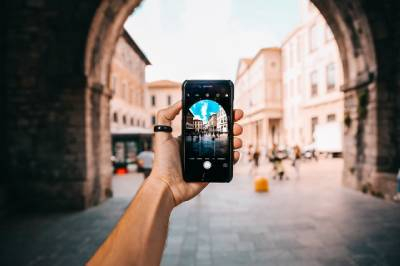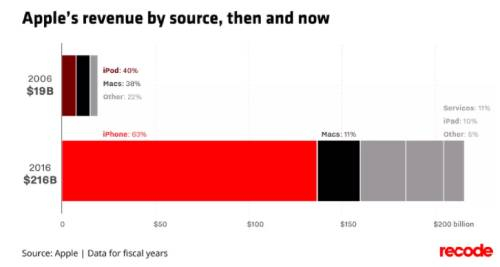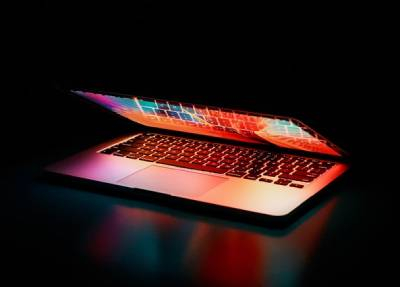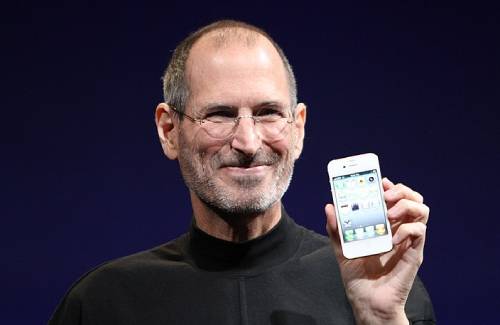Steve Jobs: The Story Behind the Visionary Game-changer
An extraordinary innovator, Steve Jobs has had 241 patents registered to his name or as a co-inventor. Many of the products he invented went on to be hits in the tech world, notably the iPhone. Before passing away in 2011 from pancreatic cancer, the American entrepreneur was the co-founder, CEO, and chairman of Apple Computer.
Born in 1955 to a Syrian father and American mother, Jobs was given up for adoption to Paul and Clara Jobs. Neither of them were university graduates, but they promised to put him through college. During his early years, he struggled in traditional classrooms and faced some challenges in school. The future genius was a loner and often bullied by classmates, but it did not hinder his progress.
When he was 10, Jobs took a keen interest in electronics. He became friends with all the engineers in the neighborhood. At the age of 13, he got a summer job with Hewlett-Packard after cold-calling them for some electronic parts. Then during his high school years, he met his future business partner Steve Wozniak.
By his senior year in late 1971, Jobs became fascinated with electronics and completed his first project with Steve Wozniak – the low-cost digital blue box. The sales were excellent and this gave them the idea that they could do wonders. He later attended Reed College but dropped out after only one semester citing that education was not for him.

After some stints with Atari and a spiritual trip in India came the birth of Apple. In 1976, Wozniak and Jobs joined forces once again with operations beginning in the latter’s bedroom. There was a third co-founder by the name of Ronald Wayne, but he didn’t stay in the picture for very long.
The duo decided on the name “Apple” after Jobs returned from a farm in Oregon. He had spent time on a farm’s apple orchard. To raise funds for their project, they had to sell some of their personal belongings. Wozniak sold his HP scientific calculator and Jobs sold his Volkswagen van. Sacrifices had to be made so they could build the first batch of the circuit boards for Apple I.
About 21 years later and a plethora of tech products, Steve Jobs unveiled a game-changer in 2007 – the iPhone.

On June 29, 2007, Apple’s launched its first iPhone. Although it wasn’t the first smartphone, it managed to outperform its competition so heavily that a mobile revolution ensued. It changed the game.
“This is a day I’ve been looking forward to for two and a half years,” said Steve Jobs on the day of the launch.
After 11 years in the market, Apple had recorded 2.2 billion units sold. It is a series of smartphones that is capable of doing many things a computer can do, but small enough to be carried around in your hand. The whole idea for this phone came into being when Jobs was trying to combine the features of an iPod with that of a phone and computer.
The awesome combination of design, power, multimedia features, and the AppStore catapulted the iPhone to success. Because of its multifunctionality, it became very popular with consumers.
Here are some major influences of the iPhone and how it has changed our daily lives.
Touch Screen
Entering a Blackberry-dominated era, who would have thought that this touch-screen device would take off like a rocket. Jobs made a very daring move that took the world by a storm. His innovation made traditional keyboard smartphones obsolete. Other smartphone companies followed the trend and these days, you’ll find touchscreens on every phone and tablet.
A touchscreen is a computer screen that responds to touch. The touchscreen makes it so much more convenient to browse, use apps, play games, and so much more. By not having a physical keyboard, it doesn’t waste any space, giving you a huge area for the screen.
One Device for Everything
Before the iPhone landed in the market, people had to go through the hassle of carrying multiple devices. It was typical to see a person with a cellphone for making calls, iPod or MP3 player for music, and a laptop for work. But today, you can do these three things with just the iPhone.
Not to mention, the camera feature. Back then, people would bring their digital cameras around. But with the iPhone and its decent camera quality, you no longer need a camera. The coverage of its features is so broad, you literally need just one device for everything.
Internet Browsing
This is yet another feature that already existed, but the iPhone made obvious improvements that changed the experiences of its users and the way we do things. Back then, you might recall being able to browse the Internet on earlier smartphones. However, the experience was never the same as using a laptop.
This Apple device paved the way to better browsing and instant information. If we quickly need to search something, we no longer have to wait to get on a laptop. We just need to reach in our pockets and open Google on our phones.
Video Recording
Speaking of obsolescence, the iPhone pretty much had the same effect on the handheld camcorder. When cameras were first installed on phones, it was already a big deal. And then the iPhone took it a step further when it came with a built-in video recorder. The quality is so good that some people don’t even use their camcorders anymore.

The fact that we’re able to so easily record moments has also led to the wide use of videos. Social media platforms such as Instagram and TikTok have been on the rise with more and more demands for video content around the world. It is a common past time to post videos and stories.
Selfies
It is pure speculation that the term “selfie” was coined by some Aussie guy. It is the slang word for a self-portrait digital photograph taken with a digital camera or smartphone. Although selfies have long existed, the term and practice only grew in popularity in 2010 when Apple launched the iPhone. It was yet another breakthrough in the sphere of innovation.
The iPhone 4 featured a front-facing camera, which made it easier for people to take selfies. With the camera facing the front, you could see the angle at which you were taking the photo. Today, all phones feature this type of camera. Love them or hate them, selfies are here to stay.
Apps
Not only a game-changer, but the iPhone also gave birth to a completely new industry – apps. With the Apple AppStore, it digitally distributed applications that users could install on their phones. Today, you can find apps for almost everything.

The app industry is worth billions of dollars. Major tech companies such as Facebook partially owe their success to this. Apps are just another way our lives have changed for the better due to innovation.
Made Apple one of the most valuable companies
Prior to the launch of the iPhone, Apple’s sales in 2006 hit close to $20 billion all thanks to the iPod and Mac. Ten years later, and you’ll see how the revenue has increased tenfold. If you break down the sales, most of it is due to the success of the iPhone. See the chart below.

In 2016, after 9 years circulating in the market, Apple’s revenues have reached a whopping $216 billion. 63% of this is attributed to the iPhone.
Opened doors for the Android ecosystem
The existence of the iPhone has led to many good things. Apart from apps, the Android ecosystem has also been on the rise. Companies that used to dominate such as Nokia and Blackberry are barely heard of these days. You have other emerging giants such as Samsung who are benefitting from the courage of Jobs.
With iPhone’s prices much higher than the rest, the market share is being stolen by cheaper competition.
Other Innovations
The iPhone was and still is a mega-hit. It is by far Jobs’ most successful innovation to date. Years after his passing, the iPhone legacy still lives on. As of 2020, there have been 11 versions of the smartphone with a new series being launched almost every year. But besides this revolutionary smartphone, this innovative genius was also responsible for other amazing products.
iPod
Launched in 2001, consumers shifted their attention from MP3 players, Discmans, and Walkmans to the iPod. It is widely recognized as the first user-friendly portable music device. Synced with the Apple iTunes store, users were able to purchase and load hundreds of songs in a single tiny device.
iPad
After the massive success of the iPhone, came the iPad. Its inspiration came from the smartphone and Jobs wanted to create the first touchscreen tablet without a keyboard. A cross between laptops and the iPhone, this innovative product also spurred the development of a new industry. Competitors followed and consumers benefitted from fierce competition.
MacBook Air

When the first Macbook Air was launched, consumers were shocked to see that the CD-ROM had been discarded. But this again shows how forward-thinking Steve Jobs was. He was a visionary that could see things changing before anyone else could. A few years down the road and we’ve all stopped using CDs. Launched in January 2008, the Air was so thin and light. Not only beautiful and sleek in terms of design, but it was powerful enough to do most of your work. The best part was being able to carry your laptop around in your bag like a feather.
Pixar
Many of you might not know this, but Jobs made a very wise investment in 1986. He bought over Lucasfilms’ Computer Graphic Division for $5 million and later renamed it to Pixar. It wasn’t until the success of Toy Story in 1995 that this animations company made a name for itself. And in 2006 after creating a new animation industry in Hollywood, Jobs sold Pixar to Disney for a whopping $7.4 billion.
With all his visionary inventions and accomplishments, it is no doubt that he was miles ahead of everyone. When the iPhone launched and many people thought he was crazy for removing the keyboard, Jobs was fearless. He continued to chase after the things he believed in.
The successful college dropout had this amazing ability to enter existing industries and take control, quickly evolving into the market leader. His ideas and motivation to change the world revolutionized the way we do things, often creating a new industry on its own.
Bonus: Interesting facts
He was a Zen Buddhist
Jobs traveled to India in 1974 in search of spiritual enlightenment. He was known to practice meditation often, didn’t eat meat, and loved to walk around barefoot.
He ripped off his partner Steve Wozniak
During his time in Atari, Jobs and Wozniak built a circuit board for the video game Breakout. Atari had asked the pair to use fewer chips in the device and beyond their imagination, they succeeded in doing so. After completing the project, Atari paid Jobs $5000, but he told Wozniak that he only received $700. The two split the profits and Wozniak got his share of $350. It wasn’t until years later that his partner found out he was ripped off so badly.
He was fired from Apple
Jobs recruited Pepsi executive John Sculley to be the CEO of Apple. After Sculley convinced the board that Jobs was too young, he was fired from Apple in 1985.
He made Google change the yellow shade in the letter “o”
With his incredible attention to detail, Jobs called Vic Gundotra, the former VP of Google. He explained to him that the second “o” had the wrong shade of yellow and that he intended to fix it.
He experimented with psychedelics
Jobs’ drug of choice was LSD and he claimed that it helped him to think differently. His trips were profound experiences that helped with his creativity and innovation.
Community

Congratulations on reaching the end!
Check out our podcast Impact Talks, where you can listen to high-profile experts from various backgrounds!
Join our Facebook Group Community with over 4,700 entrepreneurs, innovators, and creators by Startup Funding Event, where you get access to free live training, daily Q&As, design templates to get your business started, and support from the SFE team. Join here!




Leave a Reply
Want to join the discussion?Feel free to contribute!